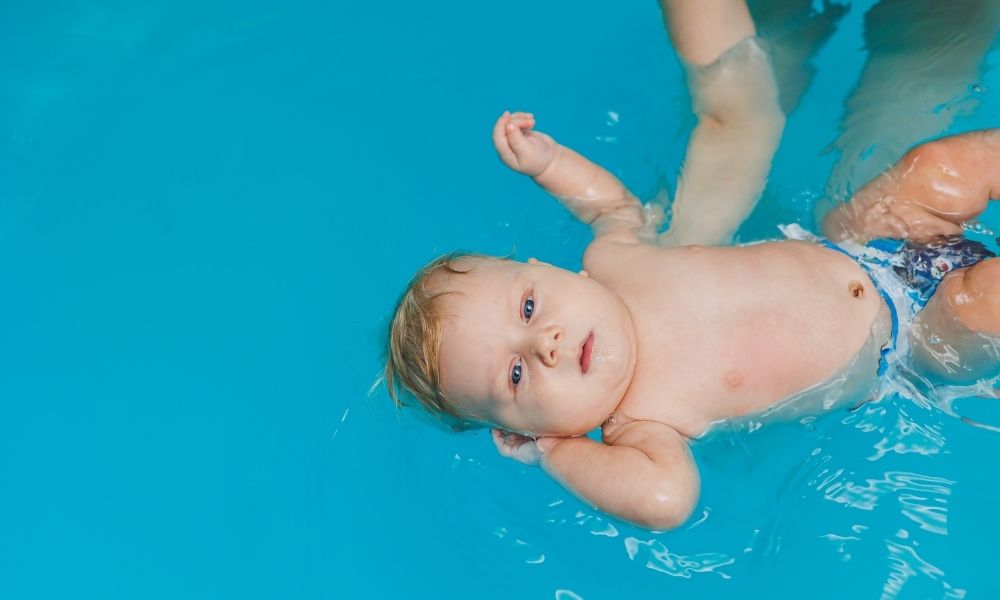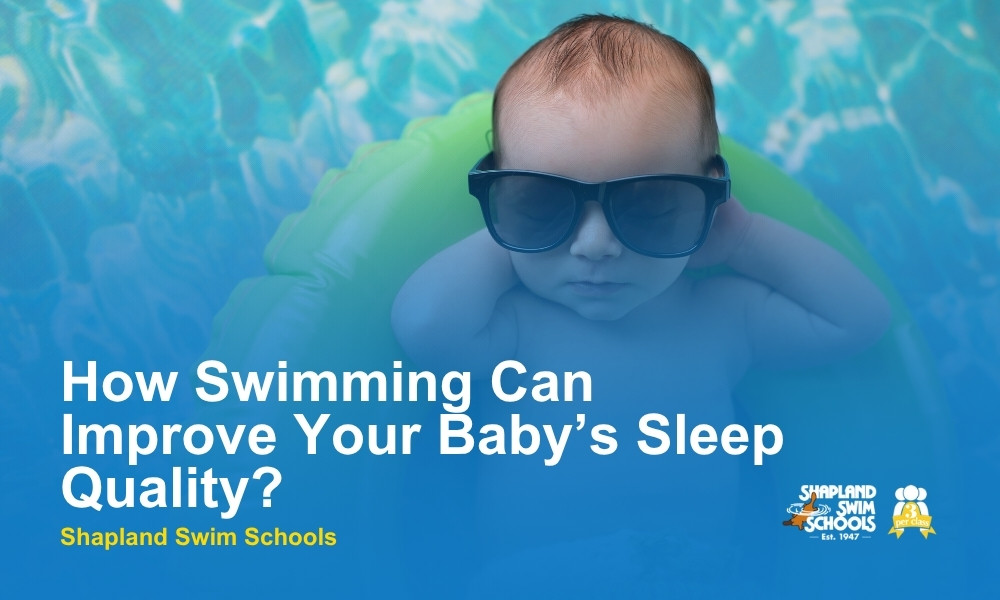If your child struggles to fall asleep easily or wakes up throughout the night, you’re not alone. Many parents find that bedtime can be one of the toughest parts of the day. The good news? Swimming can help – in a natural, gentle way
Beyond supporting your child’s physical development, swimming provides a sleep quality boost that helps children rest more deeply and wake up refreshed. Thanks to its balance of movement, relaxation and routine, swimming can be a powerful support for your child’s sleep health.
In this blog, we’ll explore how swimming can naturally improve your child’s sleep quality – and why that post-swim tiredness is one of the healthiest kinds of tired there is.
How Swimming Supports a Better Night’s Sleep for Your Children
Swimming brings together three powerful elements that help children sleep better – movement, relaxation, and routine. Some research related to physical activity and children shows that aquatic exercise contributes to better sleep quality and cognitive development, especially in growing children.

Promoting Healthy Energy Use Through Swimming
Swimming provides the right level of exertion that helps children use up energy in a healthy way. Unlike high-intensity sports, swim sessions engage all major muscle groups through gentle movements like kicking, paddling, and floating. These full-body movements naturally tire children without overstimulating them.
A 2021 study published in PMC PubMed Central (PMC8776269) found that regular physical activity, including aquatic exercise, was associated with better sleep quality in school-aged children and adolescents, especially in those with higher baseline sedentary behaviour.
Helping the Body Relax in Warm Water
Swimming in warm, mineral-rich water helps the body relax. The buoyancy and temperature of the water relieve muscle tension, while rhythmic movements calm the nervous system.
In a study published in PubMed (ID: 20730365), aquatic physical therapy for infants was associated with improved sleep-wake states and reduced behavioural distress, suggesting the calming benefits of warm water immersion.
At Shapland Swimming Schools, our pools are heated to a gentle 32°C with Magna minerals to enhance this calming experience.
Regulating Better Sleep Cycles
Children thrive on routine, and adding swim lessons to their weekly schedule creates consistent patterns. When swimming becomes a regular part of their activities, their bodies begin associating it with winding down. This helps establish a predictable evening rhythm and encourages a more stable circadian cycle. Over time, this helps children fall asleep faster and stay asleep longer.
Encouraging Sensory Play That Stimulates Cognitive Growth
Swimming is more than just physical movement – it’s a rich form of sensory play that supports both body and mind. In the water, children experience the gentle resistance around their bodies, hear the rhythm of splashes and bubbles, and coordinate their breathing with each movement. This sensory engagement helps strengthen the brain’s connection to the body, improving balance, coordination, and spatial awareness.
After swimming, the calming effects of sensory play often lead to deeper, more restorative sleep, helping children recharge and grow.
How Often Should Children Swim to Improve Sleep Quality?
Children benefit the most from swimming two to three times per week. This frequency provides the right balance between physical activity and adequate rest. At Shapland, our recommendations about how often your child should take swim lessons vary depending on their age and stage of development. Our semi-private lessons, with only three children per class, offer the ideal environment to balance active learning with a calm, supportive setting.
What Time of Day Should Children Swim for Better Sleep?
For optimal sleep results, consider late morning or early afternoon swim sessions. These times tend to work best because they help children release energy without overstimulating their bodies before bedtime. Meanwhile, swimming too close to bedtime can have the opposite effect – the body stays alert and active, making it harder to settle into sleep.

Do Children Get Tired After Swimming?
Yes – and in the best possible way. Many parents notice their child falls asleep faster and sleeps longer on swim days. The combination of gentle physical exertion, sensory play, and routine creates a natural feeling of tiredness. Unlike the jittery fatigue that comes from screens or sugar, post-swim tiredness is balanced and restorative. It’s the body’s natural signal that it has worked well, learned new skills, and is ready to recover through deep sleep.
Shapland Swimming School: Quality Swim Programs for Children in Queensland
At Shapland Swimming Schools, every detail is thoughtfully designed to support your child’s growth, confidence, and wellbeing – both in and out of the water. With a legacy spanning over 80 years, our programs are backed by decades of teaching expertise and a deep understanding of how children learn best.
Families choose Shapland for:
- Semi-private classes with only 3 children per class
- Quiet, purpose-built pools heated to a gentle 32°C with healthy Magna minerals
- Flexible make-up lessons for busy family schedules
- Air-conditioned parent viewing lounges for comfort
- A FREE Baby Home Development Program to support early learning
- A calm, nurturing environment that promotes confidence and trust in the water
- Locations across Queensland to make high-quality lessons accessible
Whether your child is just beginning their learn-to-swim journey or building on existing skills, we offer an environment where they feel safe, supported, and excited to grow.
Enrol your child today and give them the gift of lifelong swimming confidence and better sleep – one joyful splash at a time.
Sources:

